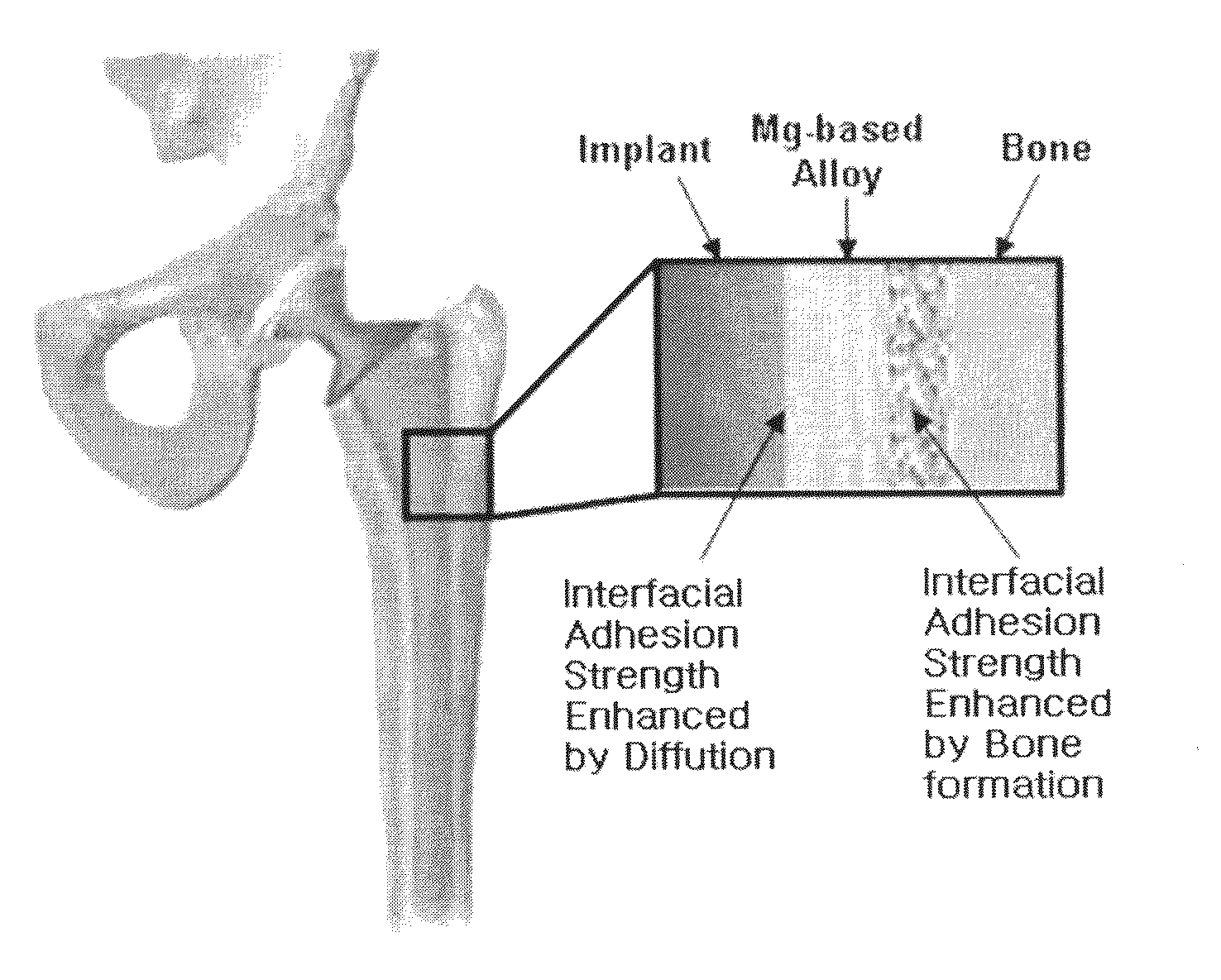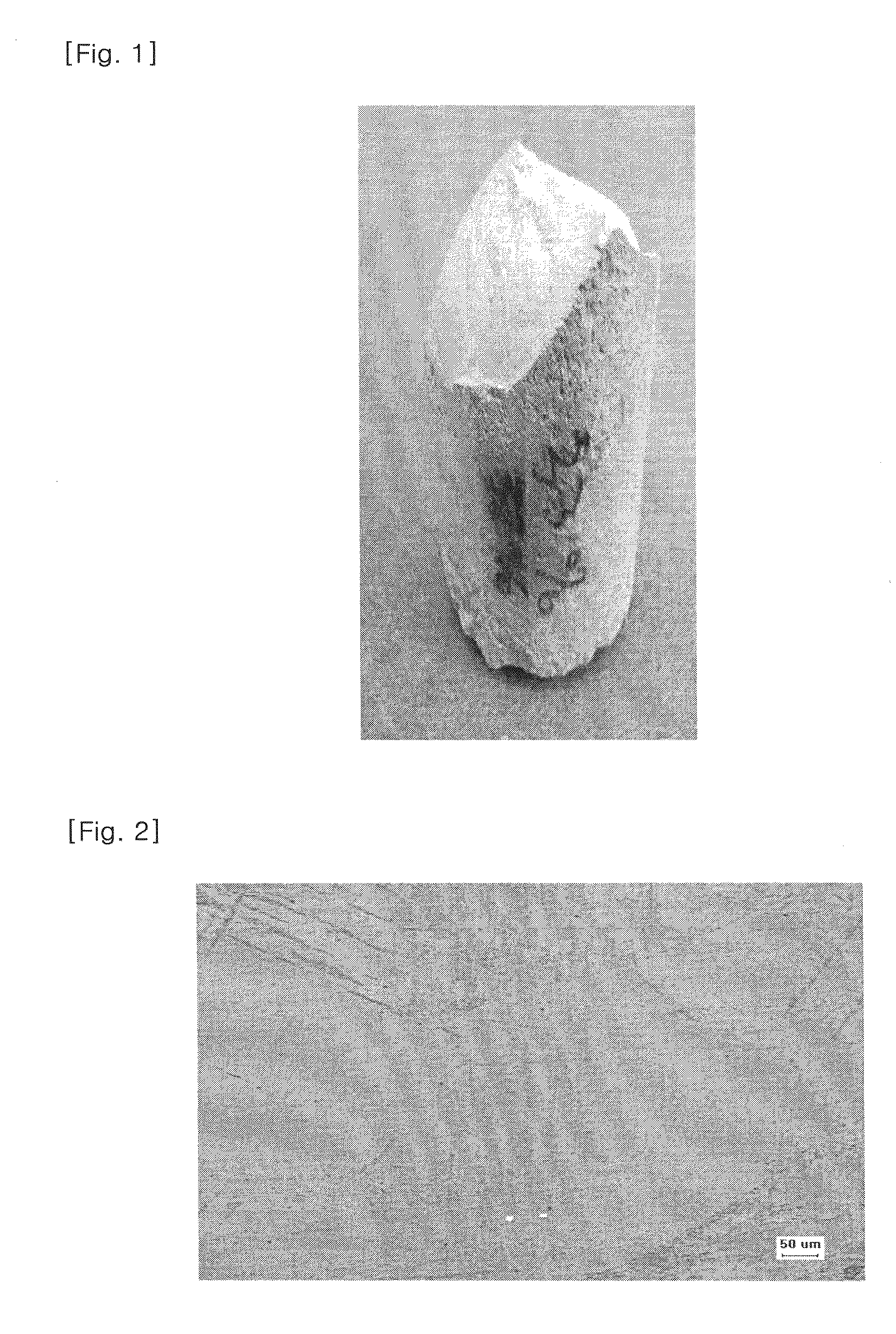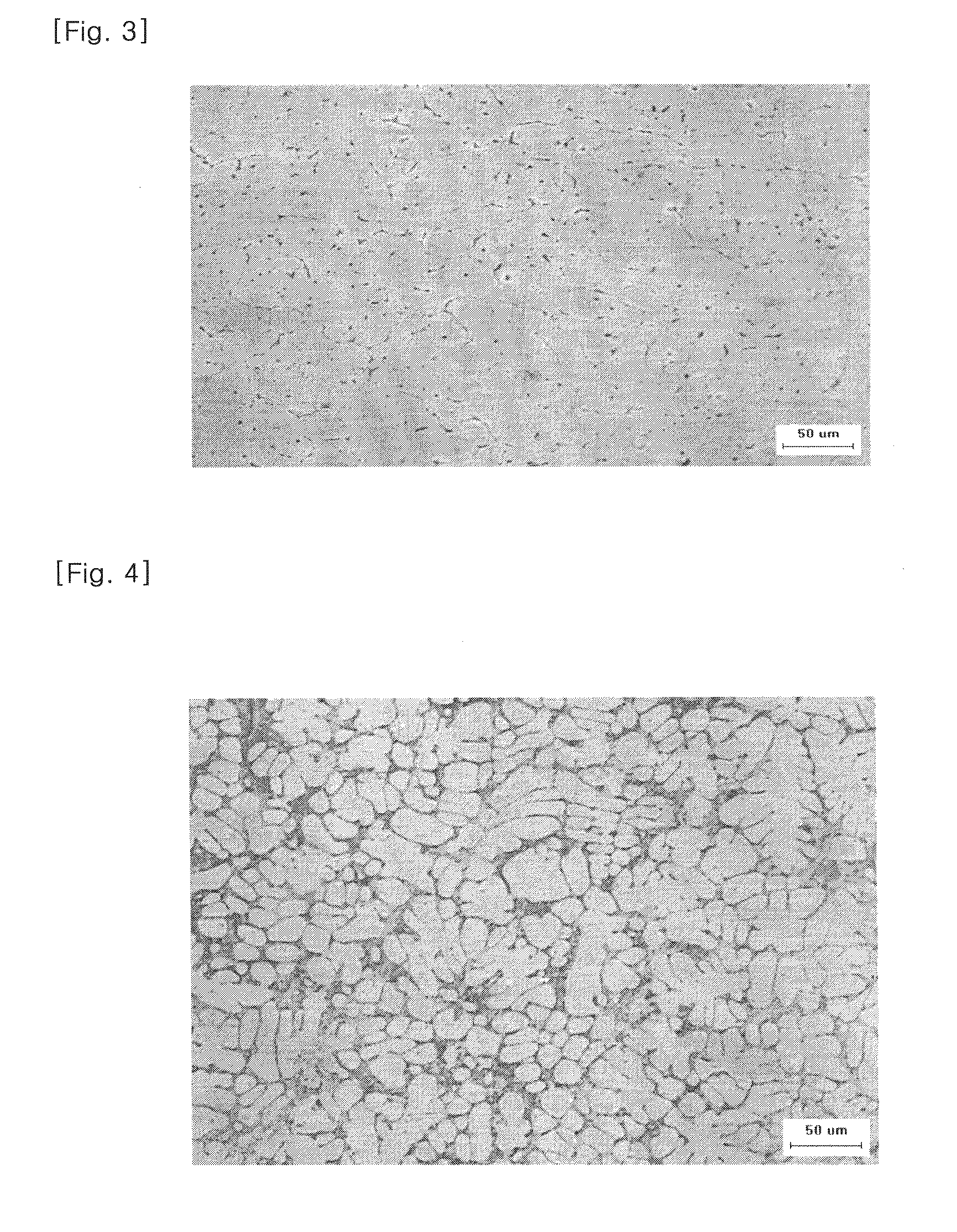Implants comprising biodegradable metals and method for manufacturing the same
a biodegradable metal and implant technology, applied in the field of implants, can solve the problems of metal implants, stress shielding, implant migration, metal implants, etc., and achieve the effect of high strength, high strength and high strength
- Summary
- Abstract
- Description
- Claims
- Application Information
AI Technical Summary
Benefits of technology
Problems solved by technology
Method used
Image
Examples
example 1
Manufacture of Implant Material Using Pure Magnesium
[0049]In the case of high pure material with a low content of impurities, as its purity is higher, the manufacturing cost is exponentially increased, whereby its commercial value deteriorates. In Examples, in order to determine an impurity concentration of magnesium available as an implant material, magnesium is manufactured by adding different amounts of Fe and Ni, and the corrosion characteristics are evaluated (hereinafter, Mg with the impurity concentration of 0.01% or less is referred to as pure Mg or 100% Mg). A stainless steel (SUS 410) crucible having an internal diameter of 50 mm was charged with each magnesium, in which ultrapure reagent grade magnesium (99.9999%) is mixed with Fe and Ni of 1) 400 ppm (0.04%), 10 ppm (0.001%), 2) 70 ppm (0.007%), 5 ppm (0.0005%), 3) 10 ppm (0.001%), 35 ppm (0.0035%). Subsequently, in order to prevent magnesium in the crucible from contacting with air, while argon (Ar) gas was allowed to f...
example 2
Manufacture of Mg—Ca Alloy
[0050]A magnesium-based alloy was manufactured by mixing magnesium with calcium. 0.8%, 5%, 10.5%, 23%, and 33% Ca were mixed with pure Mg (purity 99.995%) having impurities of 10 ppm (0.001%) Fe and 35 ppm (0.0035%) Ni, and a stainless steel (SUS 410) crucible having an internal diameter of 50 mm was charged with the mixed materials. Subsequently, in order to prevent the magnesium-based alloy in the crucible from contacting with air, while argon (Ar) gas was allowed to flow around the crucible, a temperature of the crucible was increased to the range of about 700 to 1000° C. using a resistance heater to melt the magnesium-based alloy. The magnesium-based alloy completely molten was quenched to prepare solid magnesium-based alloy. The crucible was stirred to mix the elements of the molten magnesium-based alloy with each other. Further, upon quenching, the crucible was immersed in water to rapidly quench the molten magnesium-based alloy, for the purpose of im...
example 3
Manufacture of Mg—Ca Alloy by Rapid Quenching Using Gas Blowing
[0052]The magnesium-based alloy was molten with a heater, and then the molten magnesium-based alloy was injected to a fine hole having a diameter of about 3 mm by a spraying method with argon gas, and solidified to manufacture the rapid quenched magnesium-based alloy material. In the case of using this method, the magnesium-based alloy material can be quenched at much higher rate than that of Examples 1 and 2, thereby exhibiting a very fine structure.
[0053]FIG. 8 is a photograph showing the cross section of Mg0.67Ca0.33 alloy manufactured by the above described method, which was observed by an optical microscope. As compared to FIG. 7, which is an optical photograph showing the cross section of magnesium-based alloy material manufactured by immersing the crucible in water to be quenched, the size of the composition phase is found to be very fine.
PUM
| Property | Measurement | Unit |
|---|---|---|
| Biodegradability | aaaaa | aaaaa |
Abstract
Description
Claims
Application Information
 Login to View More
Login to View More - R&D
- Intellectual Property
- Life Sciences
- Materials
- Tech Scout
- Unparalleled Data Quality
- Higher Quality Content
- 60% Fewer Hallucinations
Browse by: Latest US Patents, China's latest patents, Technical Efficacy Thesaurus, Application Domain, Technology Topic, Popular Technical Reports.
© 2025 PatSnap. All rights reserved.Legal|Privacy policy|Modern Slavery Act Transparency Statement|Sitemap|About US| Contact US: help@patsnap.com



